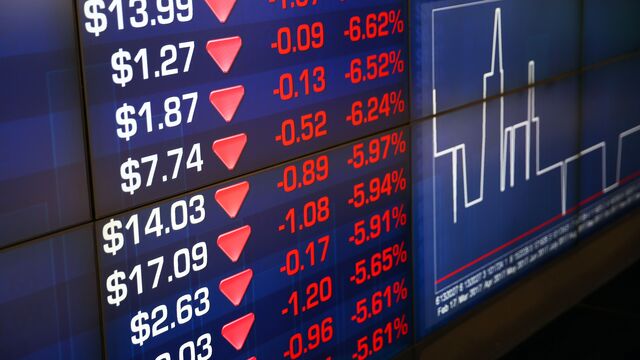Stocks Recover From Rout With Best Day Since 2016: Markets Wrap
 Tony Dwyer, chief equity strategist at Canaccord Genuity, says "we're buying the opportunity volatility is creating."
Tony Dwyer, chief equity strategist at Canaccord Genuity, says "we're buying the opportunity volatility is creating."U.S. stocks rebounded from a violent selloff to post the biggest rally in 15 months as investors poured back into some of the most beaten-down sectors.
Technology, materials and consumer shares paced a 1.7 percent gain in the S&P 500 Index, while DowDuPont and Home Depot led a 567 point surge in the Dow Jones Industrial Average, the biggest gain in two years. The ride wasn’t straight up, though. The Dow plunged more than 500 points at the open, adding to anxiety after Monday’s rout -- the worst in almost seven years. Stocks swung between gains and losses no fewer than a dozen times before a late-session rally.
The benchmark for U.S. share volatility went through wild gyrations after hitting a two-year high. Treasury yields swung before nudging higher. The greenback was little changed after two days of gains.
Web users can read more here about the global rout

Earlier, the Stoxx Europe 600 Index slumped the most since June 2016, and Japan’s Nikkei entered a correction as most of the shares on the 1,000-plus member MSCI Asia Pacific Index declined. European bonds traded higher.
What began with rising bond yields became a selloff across global equity markets late last week, as investors feared the return of inflation and higher rates that could erode profitability for companies already trading at elevated valuations. Traders are watching how the moves unfold from here -- a sustained stock slump has the potential to undermine consumer and business sentiment, crimp borrowing and so start to curtail global growth.
“Based on where we stand relative to historic averages, there may be more pain ahead,” David Lebovitz, global market strategist at JPM Asset Management, said in a message. “However, with economic growth solid, profits rising and central banks only normalizing policy at a gradual pace, it seems reasonable to expect that we will look back on this a few months from now and not even remember what the initial plunge felt like.”
Earlier Tuesday, the Cboe Volatility Index, a gauge of implied volatility for the S&P 500 Index over the next month, breached 50 to touch its highest level since the aftermath of China’s devaluation of the yuan in 2015.
Elsewhere, oil declined and metals fell. Bitcoin traded around $7,600 after at one point sinking below $6,000 for the first time since October.
Here are some key events scheduled for this week:
These are the main moves in markets:
Stocks
Currencies
Bonds
Commodities
Terminal users can read more on the slide in stocks in other Bloomberg stories:
Hedge Funds Now Look Prescient After Cutting Short-Vol Bets
Volatility-Targeting Funds Could Sell $225 Billion of Stocks
‘Buy the Dip’ Takes Hold at Allianz to JPMorgan as Rout Deepens
As Investors Raced to Hedge, ETF Options Trading Beat ETFs
Volatility Jump Has Traders Asking About VIX Note Poison Pill
VIX-Related ETPs Go Wild in After-Hours Trading After Rout
VIX at 38 Is Waterloo for the Beloved Short Volatility Trade
— With assistance by Adam Haigh, Samuel Potter, Luke Kawa, Lu Wang, and Julie Verhage
Before it's here, it's on the Bloomberg Terminal.LEARN MOREHave a confidential news tip?Get in touch with our reporters.Most Read